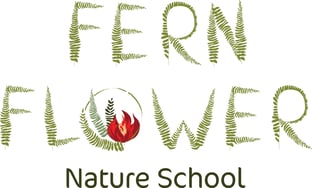Planning and Recording Your Curriculum
At Fern Flower - Nature School, we follow emergent curriculum, a flexible and child-centered approach that prioritizes children’s interests and needs. This section offers insights into how we plan, prepare, and document our curriculum while fostering creativity and engagement.
Our Approach to Curriculum Planning
We begin by observing the children, taking notes on their interests, behaviors, and interactions. These observations help us identify topics, items, or upcoming events that capture their attention.
Create a spiderweb of children’s interests to map out potential ideas.
Example: If a child shows interest in horses, we immediately explore ways to incorporate this theme.


#1 Observing
Once we identify an interest, we strive to integrate it quickly into the curriculum.
For Example - Simple Ideas to Start:
Add horse figurines to small world play.
Introduce horse-themed books in the reading corner.
Take a walk to visit a local horse or talk about horses during group time.


#2 Implementing Interests
We aim for a balance of activities that address different developmental domains.
Categories: Art; Language & Literacy; Math; Design, Technology, and Science; Sensory; Fine Motor Skills; Gross Motor Skills; Music & Movement; Cooking; Community Building; Visitors; Gardening/Nature Experiences.


#3 Planning the Curriculum
FFNS Pinterest Boards
Our Pinterest board is a curated collection of ideas, activities, and resources designed to spark creativity and bring the wonders of nature into your classrooms. Whether you're an experienced outdoor educator or just starting to integrate nature-based learning into your curriculum, you'll find a wealth of ideas that cater to all age groups.


Every Friday after kids go home, we set aside time to plan and physically prepare activities for the upcoming week. These base activities provide a structure but allow for flexibility.


#4 Prepping
Our curriculum balances traditions with spontaneous activities:
Traditions: For example, making homemade playdough every Monday.
Spontaneity: Allowing children to decide their learning paths, such as choosing a day for a walk based on weather or their preferences.
Activities prepared in advance are available but can be added to, changed, or skipped to align with the children’s needs and interests.
#5 Implementing the Curriculum


Documentation
We emphasize the importance of documenting learning experiences for both educators and children.
Curriculum Report
A daily record of activities and learning experiences, displayed on the classroom parent board.
Child’s Portfolio
A personalized journal for each child, including:
Daily notes on mood, interests, and activities.
Photos, artwork, and anecdotal observations.






Photo and Video Documentation
Weekly social media updates showcasing the children’s journey, interests, and activities.
A tool to share the daycare’s vibrant environment with families and the broader community.
Why Emergent Curriculum Works
Child-Centered: Respects and nurtures children’s natural curiosity.
Dynamic: Adapts to the interests and needs of the group.
Inclusive: Promotes diverse learning experiences and collaboration.
Empowering: Encourages children to take an active role in their education.
By embracing emergent curriculum, we create an enriching and responsive learning environment where children thrive.
Location
3827 Charlton Drive, Qualicum Beach, BC, Canada, V9K 1Z3
Contacts
fernflowernatureschool@gmail.com
+1-250-299-2054
Subscribe to
our Newsletter


